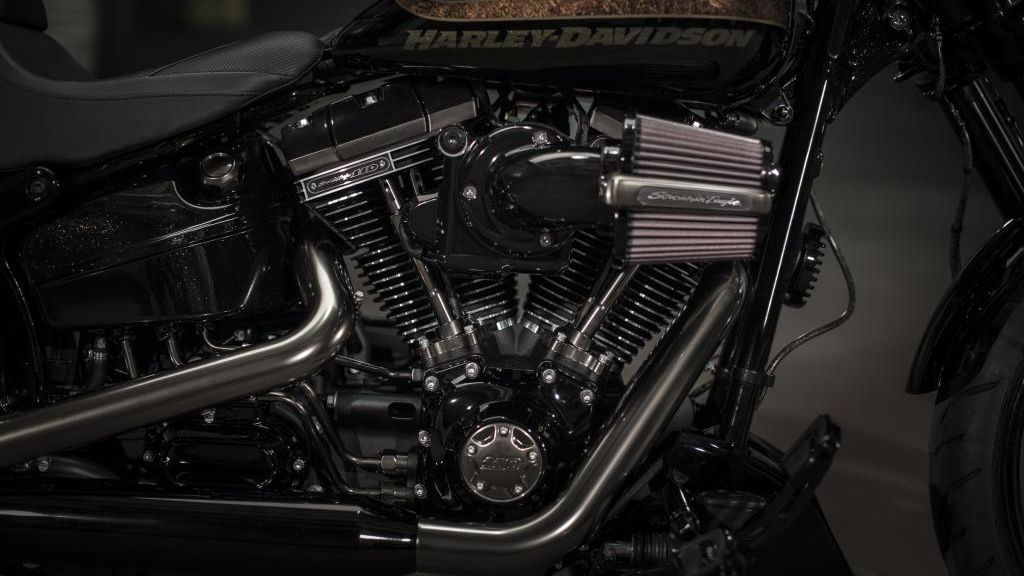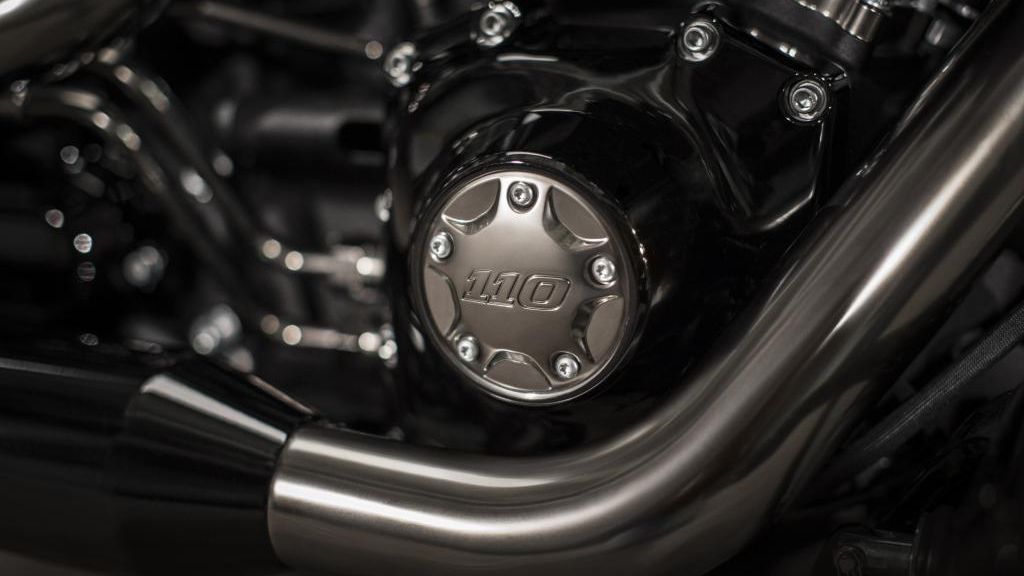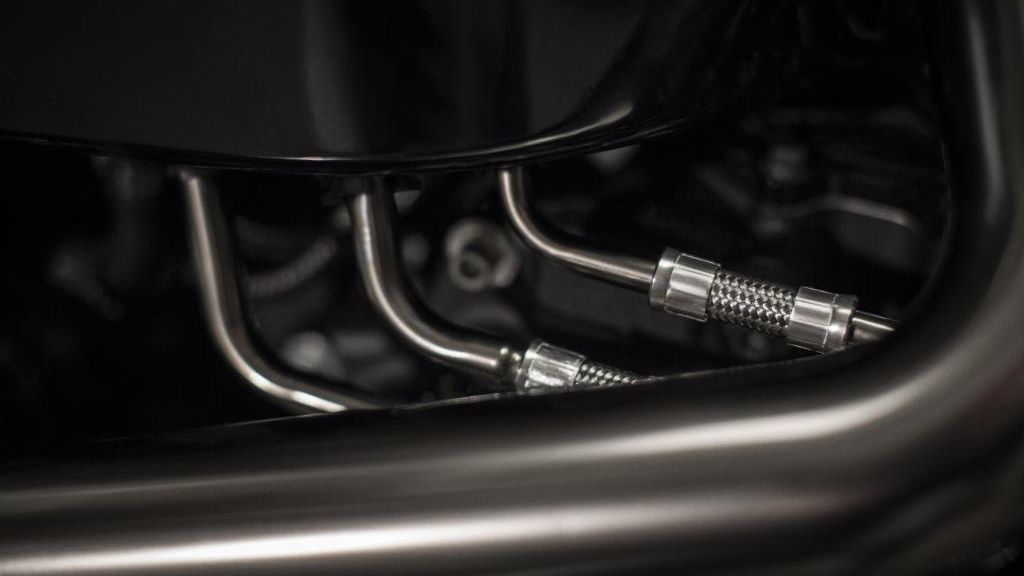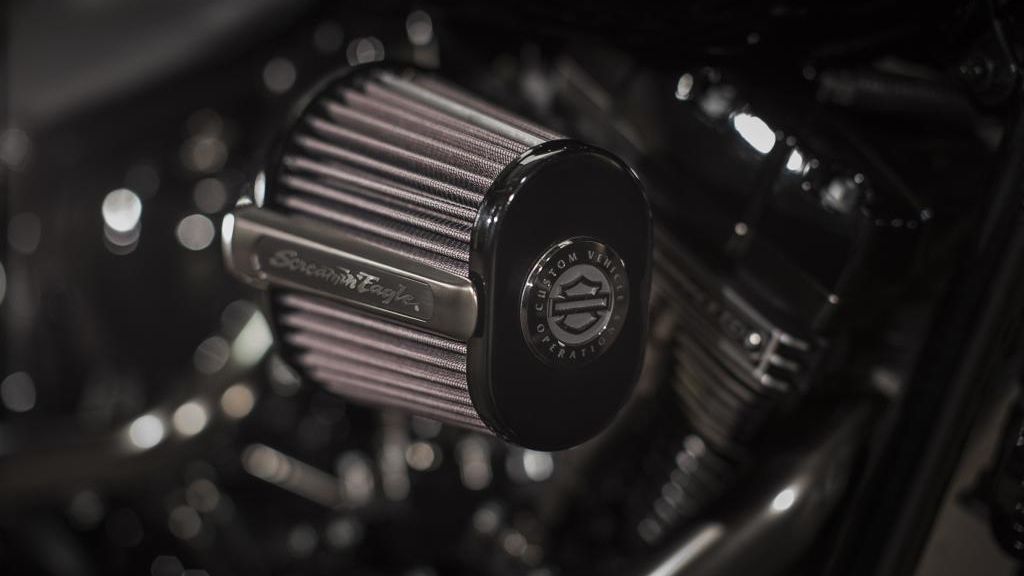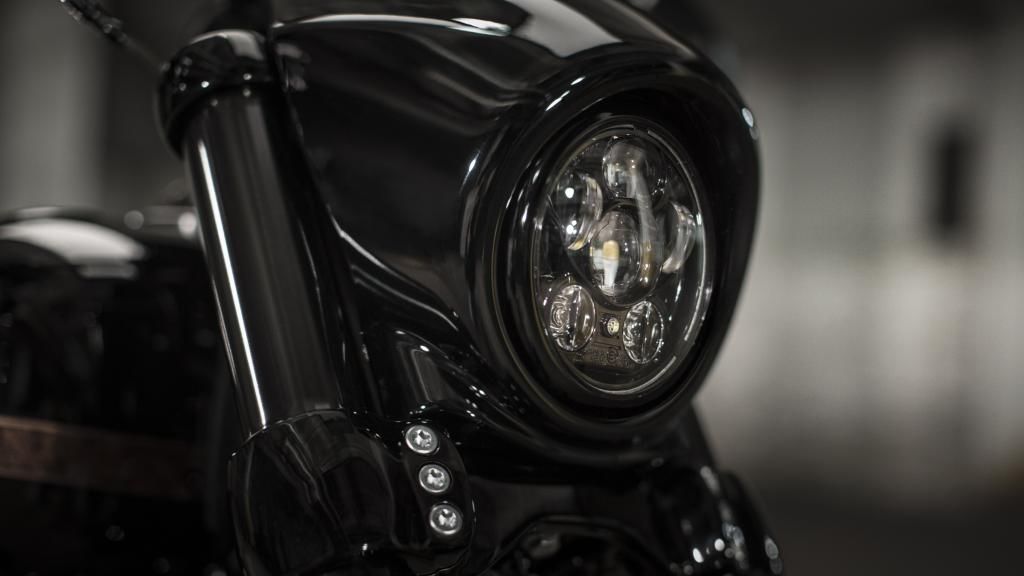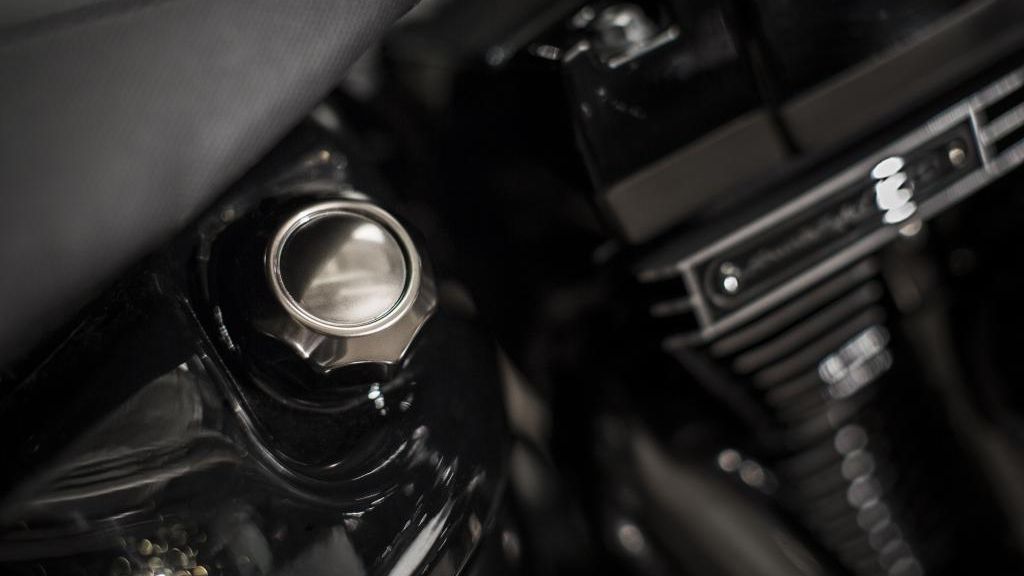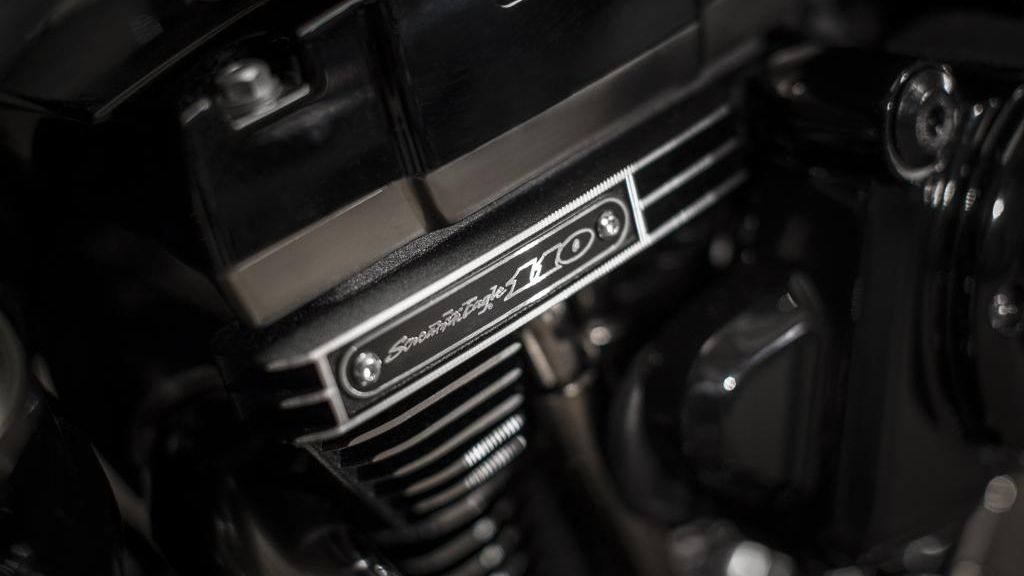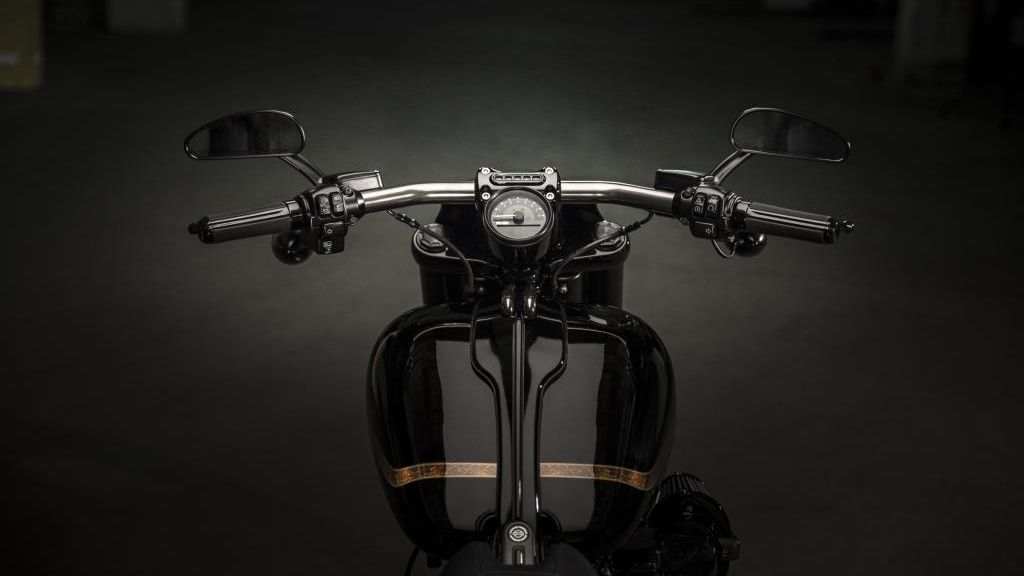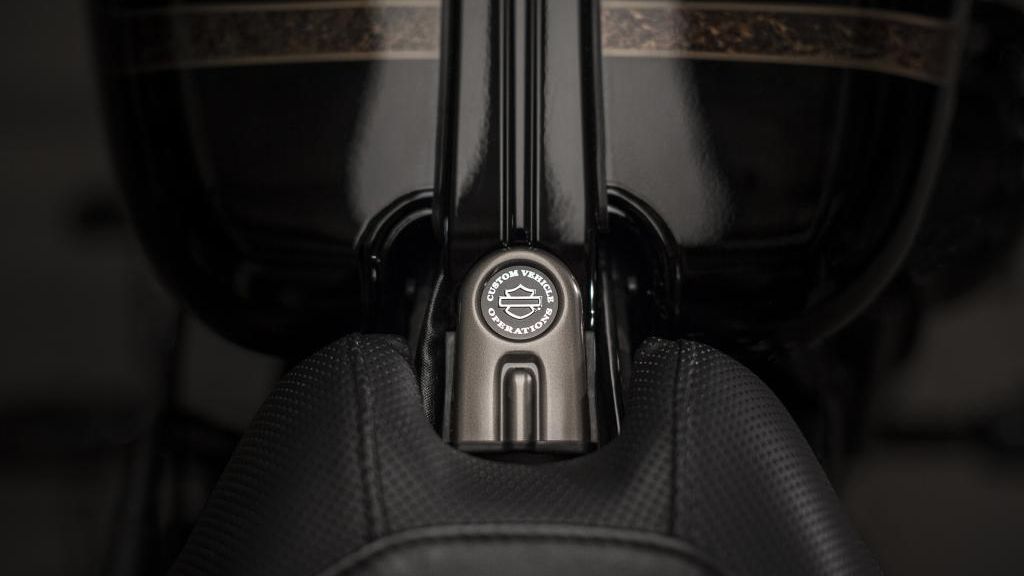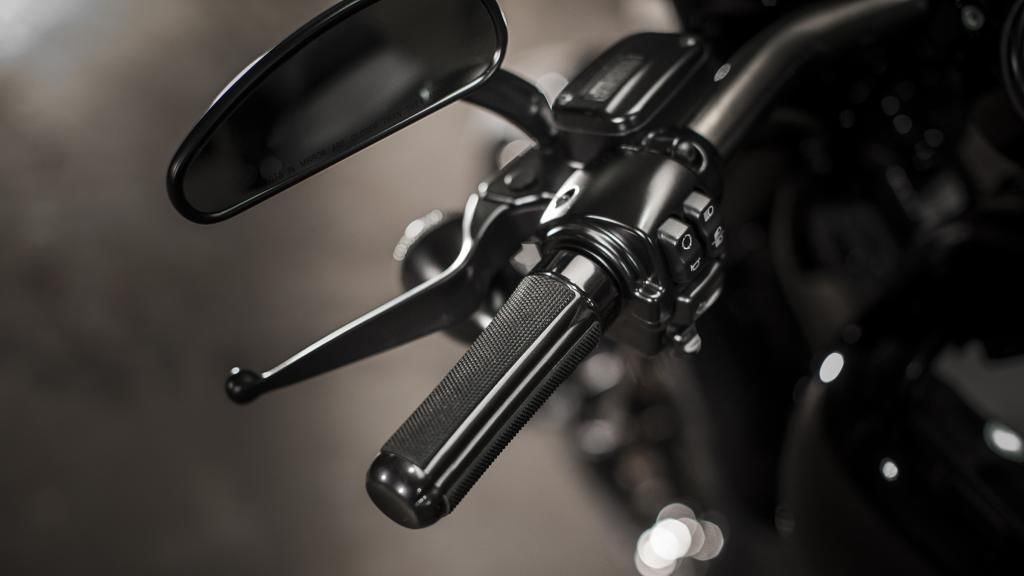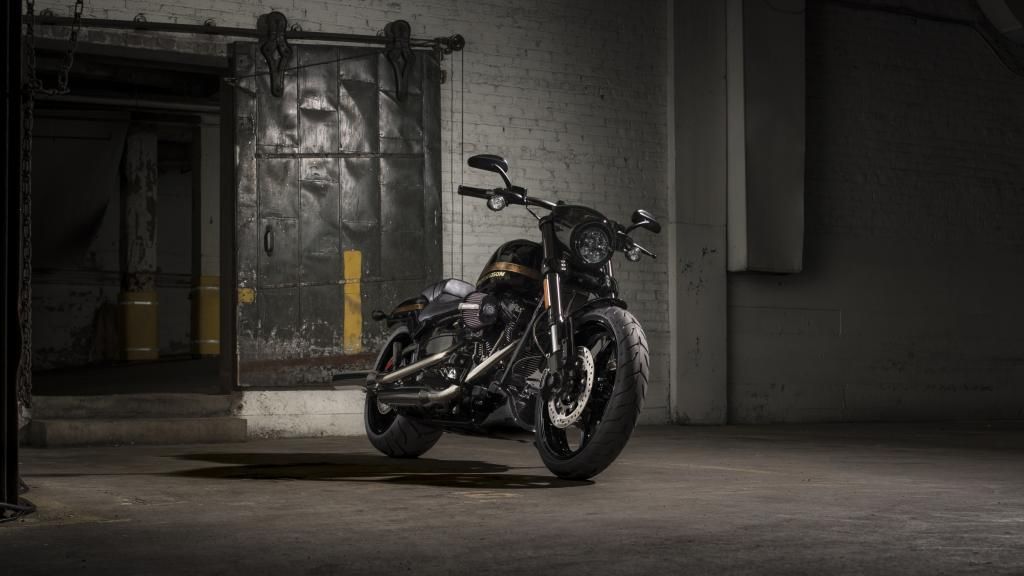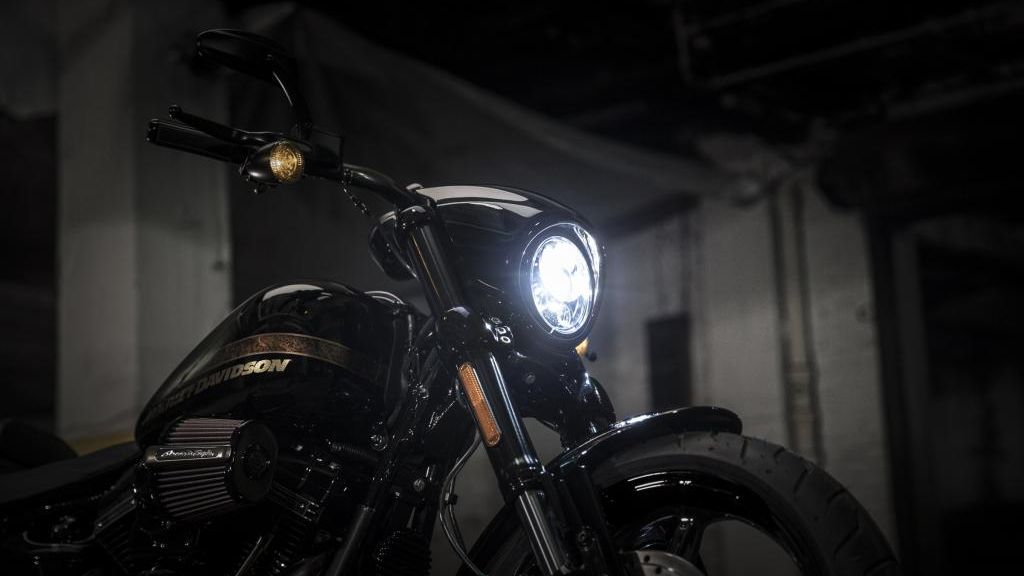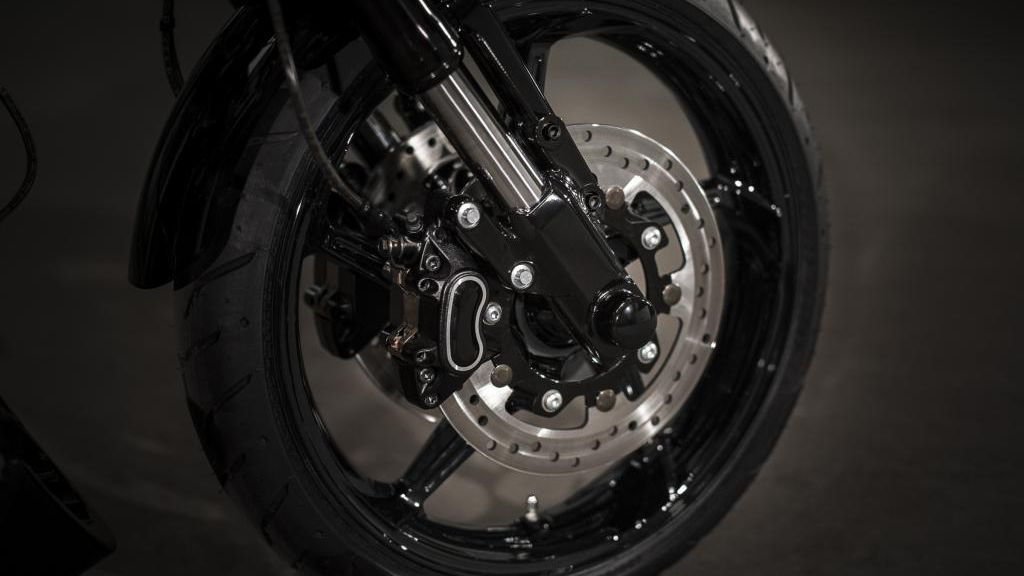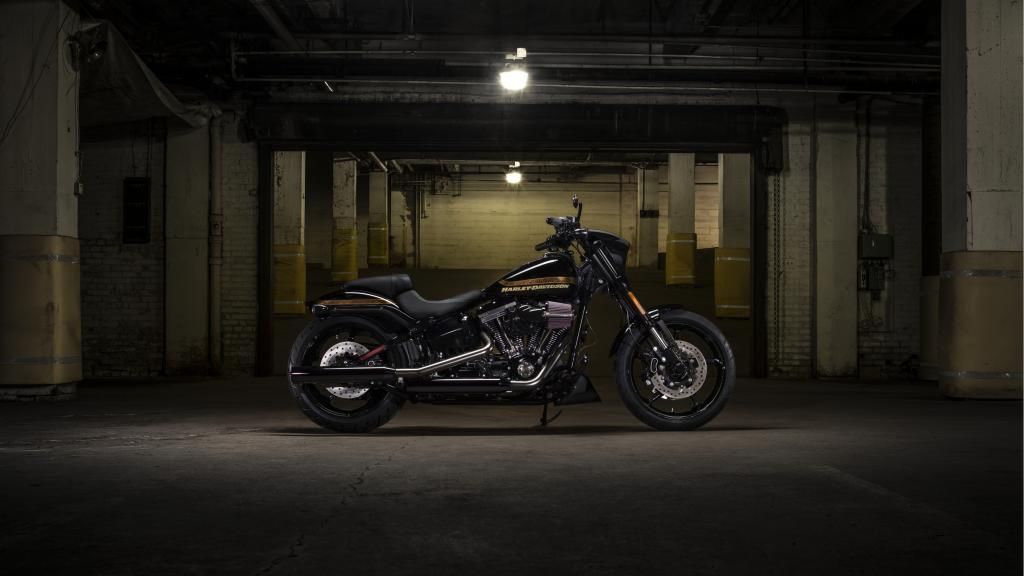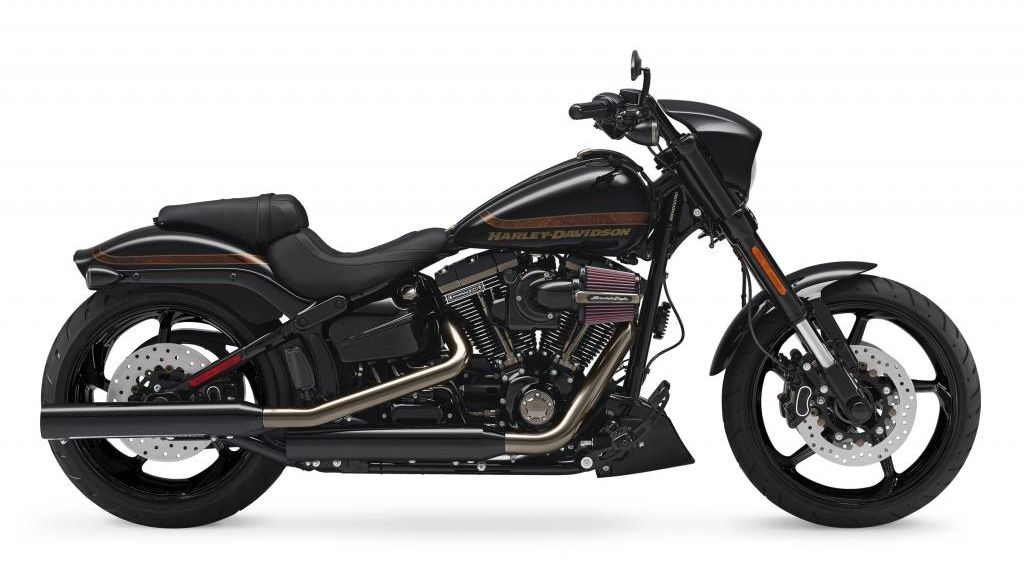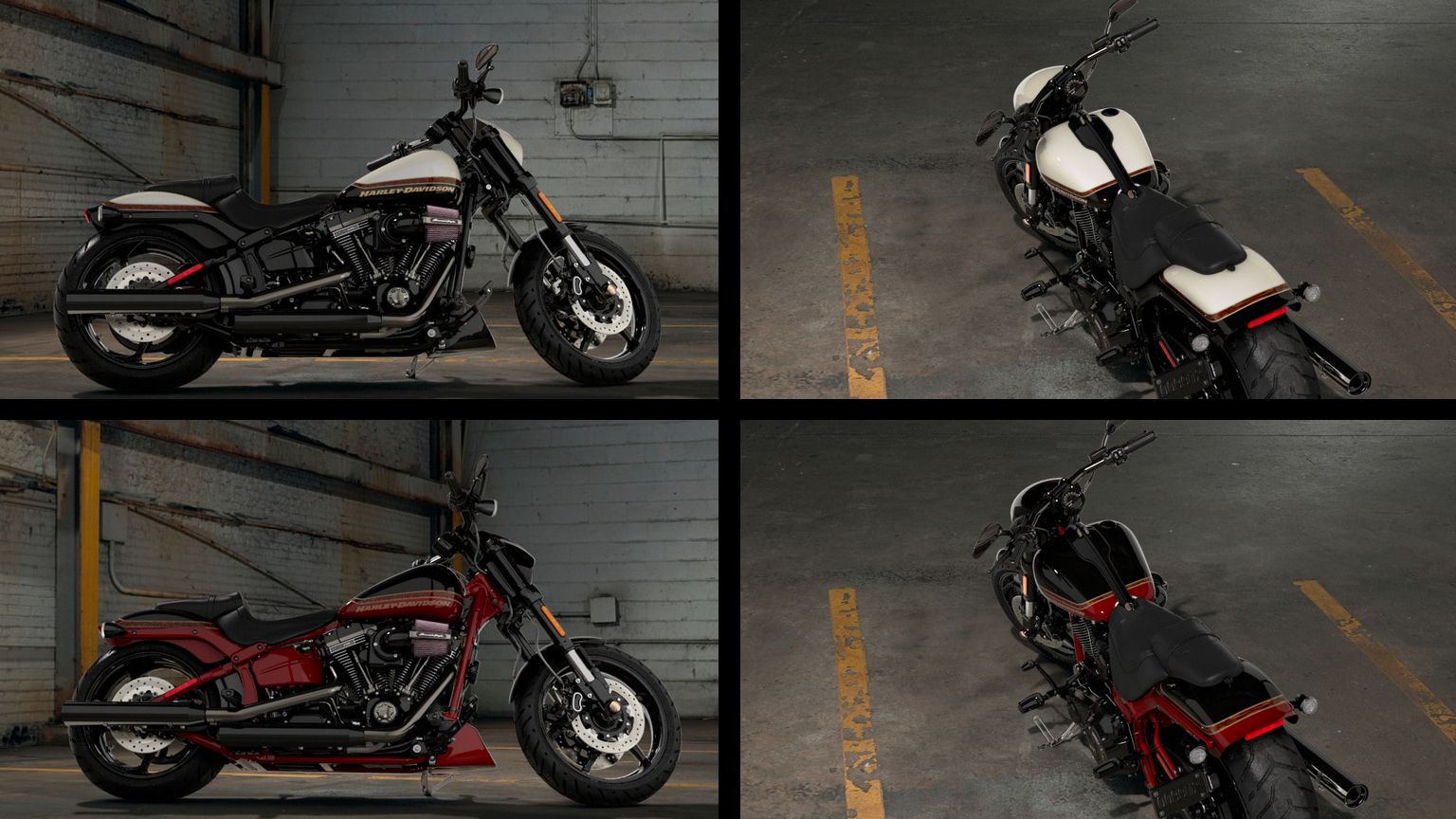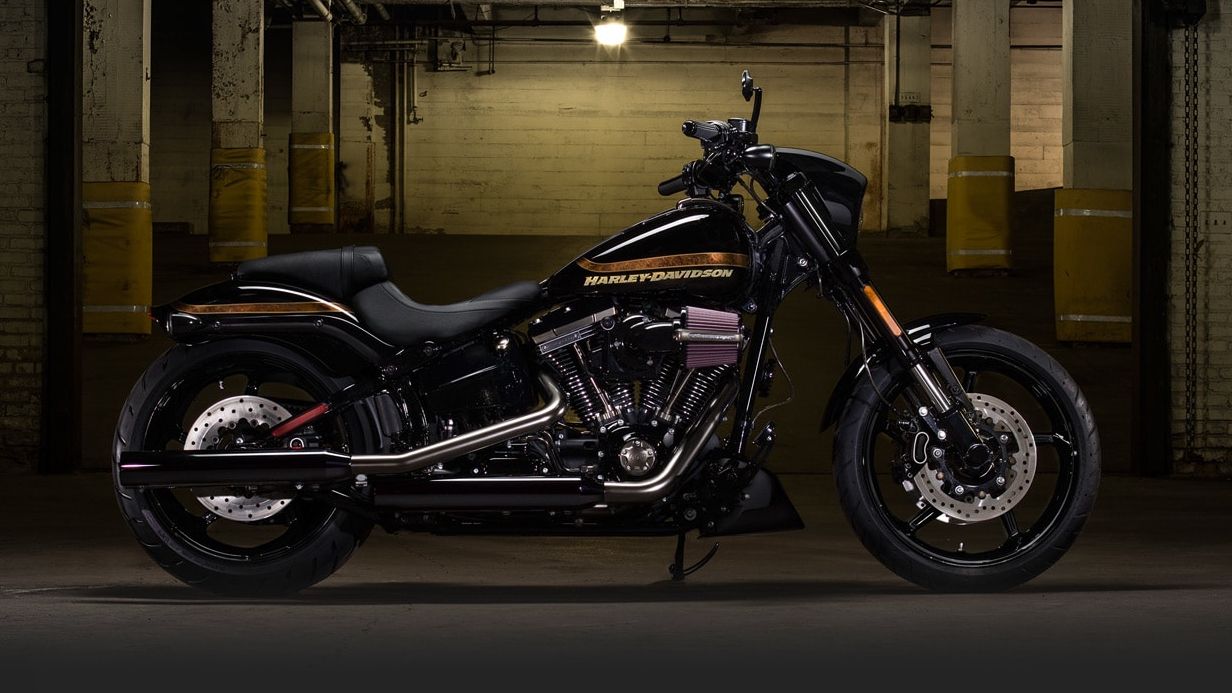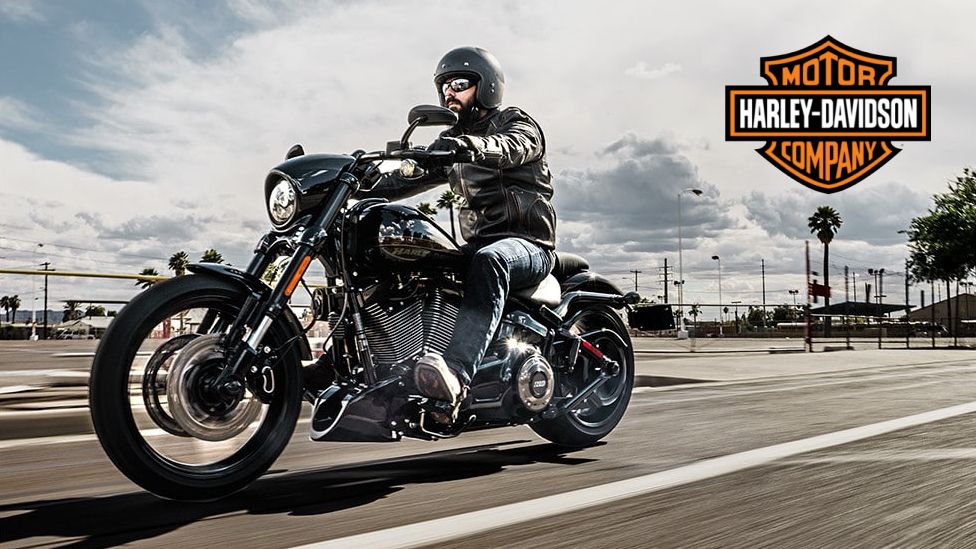Harley-Davidson's Custom Vehicle Operations (CVO) program has been hard at work churning out models with the toppest-of-the-shelfestfeatures they can cook up. All that R&D isn't wasted on the premium models though, as frequently technology pioneered in the CVO program makes its way through the Rushmore bikes and on down the line to the less-expensive models. H-D's newest CVO release is a direct assault on the American muscle-bike market, and it cuts a mean figure with its raked front end and massive V-Twin engine. Introducing the FXSE CVO Pro Street Breakout, a model packed with CVO and Screamin' Eagle yummy goodness as it rolls off the floor ready for stoplight-burner action. While Harley markets the V-Rod as its “performance line,” this Breakout definitely qualifies for that category as well, albeit with a more traditional look and DNA that goes back to the classic dragster/gasser era. Join me while I take a gander at this latest creation out of Harley's CVO division.
Continue reading for my review of the Harley-Davidson CVO Pro Street Breakout.
2016 Harley-Davidson CVO Pro Street Breakout
- Make: Array
- Model: 2016 Harley-Davidson CVO Pro Street Breakout
- [do not use] Vehicle Model: Array
Design
Low, dark and handsome are the words that come to mind when I behold the Pro Street in all its glory. I would like to add long to the list, but much of the visual impact from the 35-degree rake gets lost in the bullet- and chin-fairing, and the beefy, blackout usd front forks. The upper lines follow the same customary sweep associated with the Softail family and flow across the tank and down to the deep-scoop saddle with its 26-inch laden butt height.
Forward controls and short drag-style handlebars force the rider into a windsock position, not ideal for strong acceleration to be sure, but the stadium pillion seat adds to the lip on the back of the saddle for positive butt-retention properties for when you get twisty with it.
One might expect the rake to really push the front wheel out there, but the 66.1-inch wheelbase on the Pro Street is just a few inches longer than the rest of the Softail family, so the bike isn't really all that long, it just kind of looks that way because it is so low. A mere 4.7 inches of ground clearance separates the frame from the pavement; just enough to negotiate speed bumps and not a bit more -- great for looks, but you had better pay attention if you find it necessary to get off the pavement for any reason. Wide tires front and rear complete the overall look, and leave no questions at all as to how this bike is meant to be ridden.
This ride is made exclusive by the limited nature of the production run and by the features Harley bestowed upon it. Not only is it exclusive, but each unit is unique by virtue of the hand-laid graphics on the tank and fender, so there are no two exactly alike. Whatever doesn't get color paint or blackout gets a smoked satin chrome finish that provides a bling, but muted somewhat. These are details that should make it appeal to a particularly discriminating slice of the U.S. muscle market.
Chassis
Harley started with the most obvious frame choice for a low-and-clean ride, the faux-rigid Softail skeleton that mimics the old hardtail frames but with a clever, triangular swingarm and hidden shock absorbers that protect the back and kidneys from the ride associated with a rigid frame. Frame construction is of the mild-tubular steel with a rectangular backbone and rectangular, cross-section yoke-type swingarm for a simple but strong assembly that comes shot to match the sheet metal.
The new-in-2016 front end sports 43 mm, inverted front forks and a three-bolt tripletree with a 35-degree steering head that leaves us with 7.7 inches of trail. Needless to say, you won't exactly be carving up the Tail of the Dragon with numbers like that, but you will be able to accelerate in a straight line with plenty of inherent stability to help you keep it inside the lines. In case that was too subtle for you let me put it another way; this ride is gonna be stiff in the corners, so plan your turns accordingly.
The usd front forks and coil-over rear shocks provide 4.92 inches of travel and 3.6 inches of travel, respectively. This is sufficient for around town, but you will take a bit of a beating on long trips over poorly-maintained stretches of highway.
I wasn't kidding when I claimed the Pro Street Breakout had big hoops. It runs a 130/60 profile up front, nearly as tall and every bit as wide as the rear tire on my Sporty, and the rear tire has a whopping 240/40 profile. Not only does it make the bike look like it means business, but it provides a large contact patch for positive power transmission between the rear tire and the asphalt -- just what you need for drag racing, sanctioned or not.
The front end runs a 19-inch rim while the rear runs an 18-incher for a fairly symmetrical look. Personally I think it would look better with a big 21- inch hoop up front and a 17 or so in back, but this ain't about looks here, it's about performance. Form follows function. The rims come cast in H-D's Aggressor style, and they get the same smoked-chrome finish as the other “shiny” bits.
With great power comes great responsibility. The performance packed in the lump, and the 730-pound curb weight, generates a tremendous amount of energy to keep under control. A pair of four-piston calipers bind the dual, 300 mm front brake discs, and a twin-pot caliper binds the 292 mm rear disc with ABS overwatch in effect all around. Big contact patches, big brakes and ABS protection means you can twist the throttle with a reasonable expectation of slowing it back down safely. The 2016 model year saw another improvement at the hand controls with a reduced-reach lever to better accommodate smaller hands as well as gloved ones.
Drivetrain
Now we get to the crown jewel, as it were. The 1,802.5 cc, Screamin' Eagle Twin Cam 110B drives the Breakout, and as the name suggests, it comes with some gadetry from the official H-D aftermarket supplier. Screamin' Eagle's Heavy Breather (haha!) Elite intake manifold handles the induction -- another new-in-2016 feature – and it mounts a racy-looking, open-element air cleaner for high-volume, low-resistance aspiration.
The 110 cubic-inch mill comes in the typical, long-stroke configuration, and just a little undersquare, with its 101.6 mm bore and 111.1 mm stroke. Sequential-port injection manages the mixture and helps the Breakout achieve 43 mpg, not stellar, but its a trade off for all that power.
Speaking of power, the bottom line on this mill is the 112.1 pound-feet of soul-crushing torque it cranks out at a low, 3,500 rpm. This is enough for solid hole shots and decisive traffic maneuvers, and it represented one of H-D's most powerful engines until the Milwaukee-Eight came on the scene. Plus, it has the classic, H-D V-Twin look complete with exposed pushrod tubes and air-cooled, 45-degree configuration.
Harley's Six-Speed Cruise Drive tranny gives you nice close ratios down low, with a tall top gear for comfortable cruising or blistering down the road, er, I mean track of course. A tough and low-maintenance, fiber-reinforced belt, drive carries the power from the tranny to the rear wheel, and in 2016, the model got a slipper clutch to give your left hand a break much like the new, front brake lever unburdens your right hand.
Price
Available in stunning custom colors Starfire Black/Starfire Black or White Gold Pearl/Starfire Black last year for $25,699. For 2017, Harley added a new colorway -- Scorched Apple/Starfire Black -- and bumped MSRP up $100.
Competitor
While the easy money would be to go with the Star Raider, it would also be a bit predictable since they have so much in common, including looks. So, in the interest of diversity, I decided to look instead to the Victory Octane, a ride that seeks a performance edge with a decidedly progressive design as opposed to the traditional looks of the Breakout. To me, products like the Octane have the potential to shape the foreseeable future of the American Muscle market, so it will be interesting to see how well tradition and convention holds up in the face of the “new guard.”
First the aesthetics. The Breakout displays DNA typical of the brand and the genre with its faux-rigid Softail frame, low and muscular stance and powerful engine. Victory passes on the camouflaged frame, but embraces many of the other typical feature, and it comes off looking kind of like the mailman's kid -- similar, but different enough.
Both rides carry a minimal bullet fairing/speed screen on the tripletree and a tiny chin fairing that gets things headed in a racy direction, and the upper lines flow across a gently-curved tank to a deep-scoop saddle. The Octane carries a clean, but rather full rear fairing, while the Breakout “bobs” the rear fender a bit to show off that massive rear tire with a cut-down front fender as well. All of this makes for clean-looking rides, but the Breakout comes off looking a little more muscular with inverted front forks as opposed to the “regular” forks on the Octane and a beefy engine stuffed into the frame.
Now to the biggest difference between the two; the beating heart. Victory stuffed a 1,179 cc mill into the Octane, and at one time that was considered to be large for a V-twin, but it kind of looks like the guy with the pocket protector and big sleeves next to the ripped, 1,801 cc monster driving the Breakout. You may be thinking that it isn't fair to Victory to compare two such dissimilar engines, but that's a trade off that pays off at checkout, I assure you. Meanwhile, the Breakout's Twin Cam 110B enjoys a significant advantage in power output with 112.1 pounds of grunt faux the more modest 76 pounds from the Octane. Granted, the Breakout is billed as a “street drag” while the Octane is built for more all-around performance capabilities, so the engines -- as the bikes -- have different purposes in life.
Both rides come with six-speed transmissions geared for decisive hole shots with a tall top end, but the Breakout enjoys an easy-pull, slipper clutch that reduces lever effort and increases speed safety by limiting back-torque in the system. This is particularly important on V-twin engines with a lot of rotating mass since they don't spool up as readily as other configurations and smaller displacements.
The brakes reflect the weight difference between the two. While the Octane weighs in at only 528 pounds dry, the Breakout lumbers out with a 701-pound tally, so it's no surprise that the Harley gets dual front brakes while the Victory runs a single disc up front. Plus, the CVO Breakout comes with ABS as standard equipment while the Octane is only offered with conventional brakes. Not saying the lack of ABS is good or bad, simply that it versus.
So far, H-D has consistently come out on top, but it's time for Victory to regain some ground. True, you get a lot more bike, plus performance, name recognition and the exclusivity offered by a limited production run on the Breakout, but that sugar coating still leaves the price differential a bitter pill to take. Harley lets go of the CVO Pro Street Breakout for $25,699, over twice the $10,499 tag on the Octane. Sure, the Breakout has all the “stuff” that makes a Harley a Harley, plus a bigger engine a lots of extras, but if you are looking for a good general performance ride without all the “Harley mystique,” the Octane should definitely be on your short list for a test ride.
is0}
“It's no secret that I like Softails, and I especially like the rake and stance of the Breakout. The regular version is “good enough” with its High-Output, 103B engine, but this CVO version really knocks it out of the box. Now, I'm not into street drags -- they're dangerous, illegal and generally ill-advised -- but that doesn't mean I wouldn't like to have the ability to lay some serious smoke once in a while. The Screamin' Eagle 110B certainly fills that bill, and I like that it comes with performance modifications right out of the factory, no mucking about with the service department after the sale.”
He Said
My wife and fellow writer, Allyn Hinton, says, “That Smoked Satin Chrome was a first in the industry, according to Harley's Senior Stylist Dais Nagao. I really like it. It's bling that looks sinister instead of flashy. Laid next to the black paint, it really accentuates the details, even on the oil lines and fittings. This is a very nice looking bike.”
She Said
|
Model: |
FXSE |
|
DIMENSIONS: |
|
|
Length: |
91.7 in.(2330 mm) |
|
Overall Width: |
35.8 in. (910 mm) |
|
Overall Height: |
42.5 in. (1080 mm) |
|
Seat Height: |
Laden - 25.1 in. (638 mm), Unladen - 26 in. (660 mm) |
|
Ground Clearance: |
4.7 in. (120 mm |
|
Rake (steering head): |
35 ° |
|
Fork Angle: |
33° |
|
Trail: |
7.7 in. (196 mm) |
|
Wheelbase: |
66.1 in. (1680 mm) |
|
Tires: |
|
|
Front: |
Dunlop® Harley-Davidson® Series, bias blackwall – D408F - 130/60B19 61H |
|
Rear: |
Dunlop® Harley-Davidson® Series, radial blackwall – D407 - 240/40R18 79V |
|
Fuel Capacity: |
5 gal. (18.9 L)(warning light at approximately 1.0 gal.) |
|
Oil Capacity (w/filter): |
3.5 qts. (3.3 L) |
|
Transmission Capacity: |
1 qt. (.95 L) |
|
Primary Chain Case Capacity: |
1 qt. (.95 L) |
|
Weight: |
|
|
As Shipped: |
701 lbs. (318 kg) |
|
In Running Order: |
730 lbs. (331 kg) |
|
Gross Vehicle Weight Rating: |
1175 lbs. (533 kg) |
|
Gross Axle Weight Rating: |
|
|
Front: |
415 lbs. (188 kg) |
|
Rear: |
760 lbs. (345 kg) |
|
ENGINE: |
|
|
Engine: |
Screamin’ Eagle® Air-cooled, Twin Cam 110B |
|
Valves: |
Pushrod-operated, overhead valves with hydraulic, self-adjusting lifters; two valves per cylinder |
|
Bore x Stroke: |
4 in. x 4.374 in. (101.6 mm x 111.1 mm) |
|
Displacement: |
110 cu. in. (1801 cc) |
|
Compression Ratio: |
9.2:1 |
|
Fuel System: |
Electronic Sequential Port Fuel Injection (ESPFI) |
|
Air Cleaner: |
Screamin’ Eagle® Heavy Breather Elite with gloss black cover, high flow back - plate, exposed element, and rain sock |
|
Lubrication System: |
Pressurized, dry-sump |
|
DRIVETRAIN: |
|
|
Primary Drive: |
Chain, 34/46 ratio |
|
Final Drive: |
Belt, 32/66 ratio |
|
Clutch: |
Hydraulically actuated multi-plate, wet Assist & Slip |
|
Transmission: |
6-Speed Cruise Drive® |
|
Gear Ratios (overall)(U.S.): |
|
|
1st: |
9.311 |
|
2nd: |
6.454 |
|
3rd: |
4.793 |
|
4th: |
3.882 |
|
5th: |
3.307 |
|
6th: |
2.79 |
|
CHASSIS: |
|
|
Frame: |
Mild steel, tubular frame; rectangular section backbone; stamped, cast and forged junctions; MIG welded; color matched with vehicle |
|
Swingarm: |
Mild steel tube sections; forged junctions; MIG welded; color matched with vehicle |
|
Front Forks: |
43 mm Inverted |
|
Rear Shocks: |
Hidden, horizontal-mounted, coil-over |
|
Wheels: |
|
|
Front: |
5-spoke Aggressor 19 in. x 3.5 in. (483 mm x 89 mm) |
|
Rear: |
5-spoke Aggressor 18 in. x 8 in. (457 mm x 203 mm) |
|
Brakes: |
|
|
Caliper Type: |
4-piston fixed front; 2-piston floating rear |
|
Rotor Type (diameter x width): |
|
|
Front: |
Dual floating rotors 11.8 in. x .2 in. (300 mm x 5 mm) |
|
Rear: |
Single floating rotor 11.5 in. x .23 in. (292 mm x 5.8 mm) |
|
Anti-lock Braking System: |
Standard |
|
Suspension Travel: |
|
|
Front Wheel: |
4.92 in. (125 mm) |
|
Rear Wheel: |
3.6 in. (92 mm) |
|
PERFORMANCE: |
|
|
Engine Torque (per J1349) (North America): |
112.1 ft. lbs. @ 3500 RPM (152 Nm @ 3500 RPM) |
|
Lean Angle (per J1168): |
|
|
Right: |
24.8° |
|
Left: |
25.5° |
|
Fuel Economy (EPA urban/highway test): |
43 mpg (5.5 L/100 km) |
|
ELECTRIC: |
|
|
Battery (per Battery Council International Rating): |
Sealed, maintenance-free, 12V, 19-amp/hour, 315 cca |
|
Charging: |
Three-phase, 38-amp system (439W @ 13V, 2000 RPM, 489W max power @ 13V) |
|
Starting: |
1.2 kW electric with solenoid shift starter motor engagement |
|
Lights (as per country regulation): |
|
|
Headlamp (LED): |
24-watt low beam, 26-watt high beam |
|
Tail/Stop Lights: |
LED combination Stop/Tail/Turn |
|
Front Signal Lights: |
LED self-cancelling |
|
Indicator Lamps: |
High beam, neutral, low oil pressure, turn signals, engine diagnostics, security system, low fuel warning, cruise control, ABS |
|
WARRANTY: |
|
|
Warranty: |
24 months (unlimited mileage) |
|
Service Interval: |
First 1000 miles(1600 km), every 5000 miles(8000 km) thereafter |
|
COLORS: |
|
|
Custom Colors: |
|
|
2016: |
Starfire Black/Starfire Black, White Gold Pearl/Starfire Black |
|
2017: |
Starfire Black/Starfire Black, White Gold Pearl/Starfire Black, Scorched Apple/Starfire Black |
|
Price: |
|
|
2016: |
$25,699 |
|
2017: |
$25,799 |


